MyDigitalSSD SMART & BP3 mSATA SSD Review
by Kristian Vättö on January 22, 2013 1:24 PM ESTMyDigitalSSD SMART
The heart of the SMART is SandForce's SF-2281 controller, which is used by dozens of manufacturers. SandForce doesn't use dedicated DRAM cache, leaving the controller and NAND as the only components on the PCB. The drive came with firmware 5.0.2a but there's a newer 5.0.4 available at MyDigitalSSD's website. I ran a few tests with the new firmware but didn't see any noticeable difference in performance so the scores you'll see are with the 5.0.2a firmware.
On the flip side we find another two NAND packages. These are all octo-die packages to yield the capacity of 256GB, which is currently the maximum for mSATA form factor (though Mushkin has announced a stacked mSATA design with up to 480GB). Once 128Gb dies start to make their way into the market sometime in 2013, we should see mSATA SSDs of up to 512GB without special designs.
The actual NAND in the SMART is a bit of a mystery. Googling the part number yields no results but from what I was able to find, it seems that the NAND is running in synchronous mode and manufactured using IMFT's 25nm process but packaged by ADATA (for example their SX300 uses the same NAND). The idea is that you buy whole wafers of NAND and then use your own binning methodology to pick the best dies. When you buy pre-packaged NAND, it's unlikely that you'll be getting the highest quality NAND because usually the manufacturer reserves that NAND for their own products. If you buy NAND in whole wafers, you will also get a small share of the highest quality chips, although you are also left with a big chunk of NAND that is not suitable for SSDs (but it may be fine for memory sticks and cards). This is a fairly common practice in the SSD industry and for example OCZ and Kingston do it as well.
It's unclear to me why MyDigitalSSD chose ADATA but the SMART is actually recognized as an ADATA SX300 by the system, so the SMART may be a rebrand of the SX300 or at least MyDigitalSSD has worked very closely with ADATA.
MyDigitalSSD BP3
Not much is known about Phison's PS3108 controller. Phison says the controller supports both SLC and MLC NAND, along with 1Xnm class NAND. The controller is fabricated using 55nm CMOS process, but the actual manufacturer is unknown. The controller is coupled with 256MB of DDR3-1333 DRAM from Nanya. The drive came with firmware version 3.2, which is currently the latest.
In the NAND department we have four of Toshiba's 24nm Togge-Mode MLC NAND packages, each consisting of eight 8GB dies yielding a total capacity of 64GB per package.
The motherboard in my testbed does not have an mSATA slot, so MyDigitalSSD also sent us an mSATA to 2.5" SATA adapter.
Test System
| CPU | Intel Core i5-2500K running at 3.3GHz (Turbo and EIST enabled) |
| Motherboard | AsRock Z68 Pro3 |
| Chipset | Intel Z68 |
| Chipset Drivers | Intel 9.1.1.1015 + Intel RST 10.2 |
| Memory | G.Skill RipjawsX DDR3-1600 2 x 4GB (9-9-9-24) |
| Video Card |
XFX AMD Radeon HD 6850 XXX (800MHz core clock; 4.2GHz GDDR5 effective) |
| Video Drivers | AMD Catalyst 10.1 |
| Desktop Resolution | 1920 x 1080 |
| OS | Windows 7 x64 |


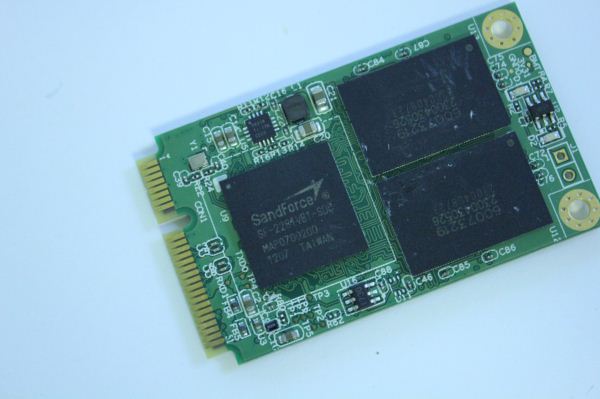
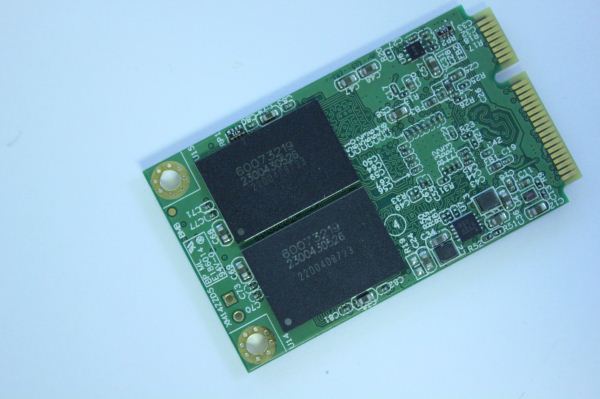
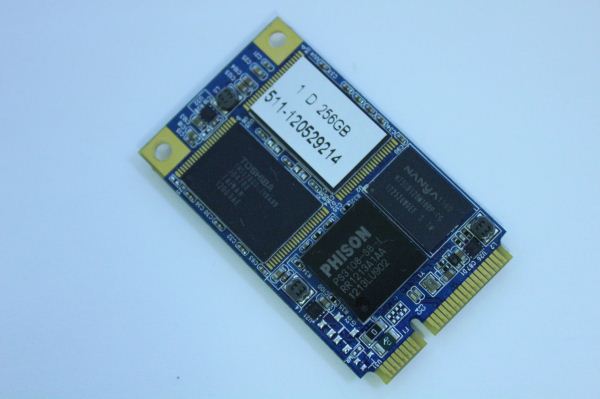
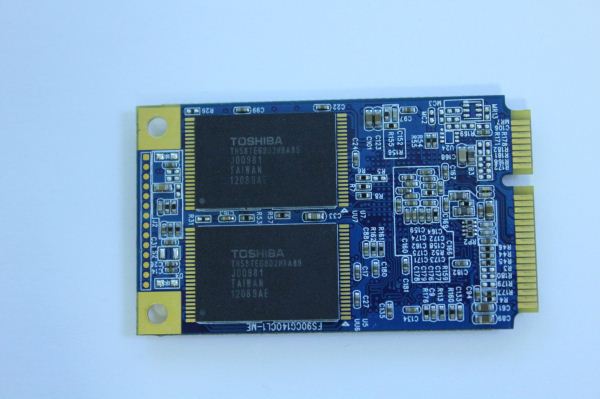
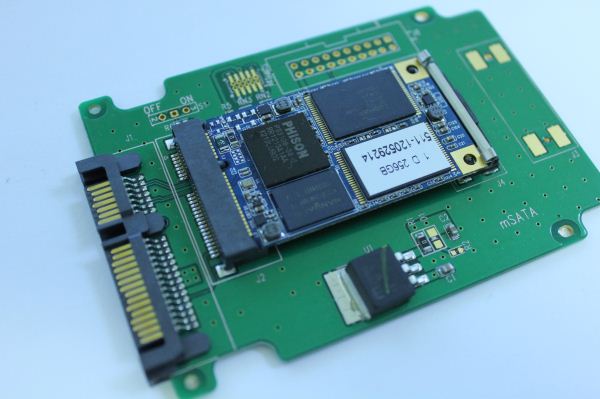








49 Comments
View All Comments
nathanddrews - Friday, January 25, 2013 - link
I have a JMicron-based G.SKILL FM-25S2S-64GB sitting around doing nothing. It has a USB port so I sometimes use it as a thumb drive. I am more than happy to donate it to the cause. Just tell me where to send it.Kristian Vättö - Saturday, January 26, 2013 - link
I bet sending the drive to Finland will cost more than the drive itself ;-) Anand should have some older SSDs, so I'll ask if he could run some testsnathanddrews - Saturday, January 26, 2013 - link
I just checked estimates from FedEx and UPS... You are not kidding! I thought it would cost about $25, not $125.Anand lives in southern USA, doesn't he? That should be very cheap. If he doesn't have one of these kickass drives, I'll send it to him. ;-)
Kristian Vättö - Saturday, January 26, 2013 - link
Anand lives in Raleigh, North Carolina. He still has JMicron based drives (just asked him) and he'll run some tests once he finds one, so no need to send one :-)nathanddrews - Saturday, January 26, 2013 - link
Cool, can't wait to see the results. Thanks, Kristian!Per Hansson - Thursday, January 31, 2013 - link
That's nice Kristian!I'm looking forward to seeing those results :)
Tjalve - Tuesday, April 9, 2013 - link
Ive actually done some testing on performance consistency for my reviews over att Nordichardware.sehttp://www.nordichardware.se/SSD-Recensioner/svens...
Theese tests are NOT done on a steady state drive though. But theese nuymbers give an indication on how I/O Latency are reflected i a real-world situation.
AND the graphs include some crappy drives like the Verbatim SSD 128GB and the Teamgroup L2 128GB.
I actually have steady state 4K Write perormance numbers (similiar to the ones here) on most drives aswell, but i havet published them just yet.
Gunbuster - Tuesday, January 22, 2013 - link
Workstation laptops. Going mSATA for OS often leaves you two other spindles for large spinning storage, another SSD or a combo of both.Why? For Hyper-V devs or content creators.
madmilk - Tuesday, January 22, 2013 - link
Workstation laptops and DIY upgrading is quite a niche scenario. Most workstation owners (that is, businesses) would just build-to-order with the SSD, instead of risking downtime just to save a couple hundred bucks.critical_ - Tuesday, January 22, 2013 - link
I own a Dell M6700 with the ADATA SX300 mSATA SSD (256GB) and 3 Hitachi 7200RPM 2.5" 1TB drives in RAID5. While I'd like to think I'm the only person in the world with this configuration, that would be silliness on my part. :)